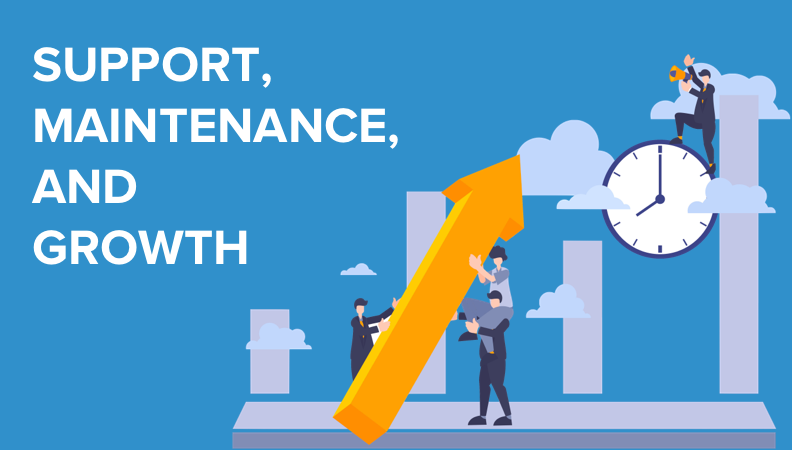
General Principles of Sustainable Web Development
Sustainable web development emphasizes developing websites that consume few resources, thus minimizing energy use and carbon footprints. Some of its main principles are:
- Code Optimization: Compact, minified code reduces file sizes, decreasing data transfer and energy usage.
- Data Management: Intelligent caching and compression reduces storage requirements and server load.
- Responsive Design: Optimizing for all devices saves energy by not requiring several versions of the site.
- User Experience (UX): Simple interfaces reduce users’ time on the site, lowering energy consumption.
- Eco-Friendly Features: Power-saving modes and session timeouts minimize unnecessary consumption of resources.
- Hosting and Infrastructure: Selecting renewable energy-powered hosting and efficient data centers reduces emissions.
How Drupal Facilitates Sustainable Web Development
Drupal runs more than a million websites, which is ~2% of the web, and its structure naturally lends itself to sustainability. Its modular framework, built-in performance features, and community-driven efforts enable it to be perfect for green development. Some important features are:
Modular Architecture: Only required modules can be added by developers, preventing bloated code that wastes energy.
Built-in Caching: Drupal’s caching mechanisms, such as page and block caching, reduce the load on the server and lower load times, which translates directly into energy efficiency.
Community Commitment: Drupal Sustainability Team, as outlined on Drupal.org, promotes eco-friendly principles and is aligned with UN Sustainable Development Goals, including Climate Action and Responsible Consumption. Drupal being recognized as a Digital Public Good, sanctioned by the Digital Public Goods Alliance, underscores its sustainability commitment.
Extensibility: Drupal’s large ecosystem of modules provides support for features such as lazy loading and asset compression, allowing developers to adopt sustainable practices with ease.
The Drupal community also runs environmentally sustainable events, like DrupalCamps and DrupalCons, including measures to limit carbon footprints, such as decreasing trans-Atlantic flights by having separate events in Europe and North America.
Calculate Your Website's Carbon Footprint
Practical Tips for Creating Eco-Friendly Websites with low CO2
In order to create green Drupal websites, developers can follow specific practices that reduce energy consumption and carbon footprint. The following are comprehensive methods, including lazy loading, minifying assets, green hosting, and others.
Lazy Loading
Lazy loading postpones the loading of non-essential resources, including images and videos, until they are in the user’s view. This minimizes the initial page load time and data transfer, conserving energy and enhancing user experience.
Lazy loading, by loading content only when needed, minimizes unnecessary data transfer.
Asset Compression
Compressing assets like images, CSS, and JavaScript reduces file sizes, decreasing data transfer and energy consumption. This also enhances page load speeds, benefiting both sustainability and user experience.
Using newer image formats like WebP or AVIF that support more efficient compression than JPEG or PNG is always recommended.
Use Vardot's contributed module Dynamic Responsive Image - Improved (or drimage improved) which generates scaled images on-the-fly on the client's browser and device.
CSS and JavaScript Optimization
Activate Drupal’s built-in CSS and JavaScript aggregation options (in the Performance settings) to concatenate files and minimize HTTP requests.
Apply minification tools for JavaScript or CSS to eliminate unnecessary whitespace and characters.
Eliminate unused code with the help of tools like PurgeCSS.
Green Hosting
Selecting a green host is an important step in minimizing a website’s carbon footprint. Green hosts utilize renewable energy and energy-efficient data centers, which drastically reduce emissions.
Fossil fuel-powered data centers are a significant contributor to carbon emissions. Green hosting is in line with sustainability objectives since it utilizes clean sources of energy.
Further Strategies toward Sustainability
In addition to the basic methods, other approaches can contribute to the sustainability of Drupal sites:
Enable Caching: Utilize Drupal’s internal caching to cache pages, which decreases server load and power consumption.
Use a Content Delivery Network (CDN): CDNs distribute content across global servers, reducing data travel distance and energy consumption. Drupal module integration is made possible by modules like CDN.
Optimize Database Queries: Create efficient database queries to reduce server processing time.
Select Energy-Efficient Themes and Modules: Choose lightweight themes and modules optimized for performance, avoiding resource-heavy options.
Monitor Performance: Use tools or modules to examine and improve your site’s environmental impact.
🌱 Varbase is Green
Varbase, our Drupal distribution, is extremely optimized for the creation of eco-friendly websites thanks to its performance-oriented architecture and built-in sustainability features. Constructed on Drupal's modular framework, Varbase features pre-enabled tools such as advanced caching (e.g., support for Varnish and Memcached through modules such as Varnish Purge and Memcached), SEO optimization via the Varbase SEO module, and lightweight theme and modules that reduce server load and data transfer, resulting in lower energy usage.
Conclusion
Developing sustainable websites with Drupal is both viable and effective, and it aligns with the emerging demand for sustainable digital solutions. By taking advantage of Drupal’s modular design, native performance features, and community-supported sustainability efforts, developers can build websites that are environmentally friendly while providing great performance and user experience.
Lazy loading, asset compression, green hosting, and other optimizations can help lower carbon footprints. With the web only set to grow, implementing these strategies is important in building a more sustainable internet. Begin optimizing your Drupal website now and be a part of a greener web.

